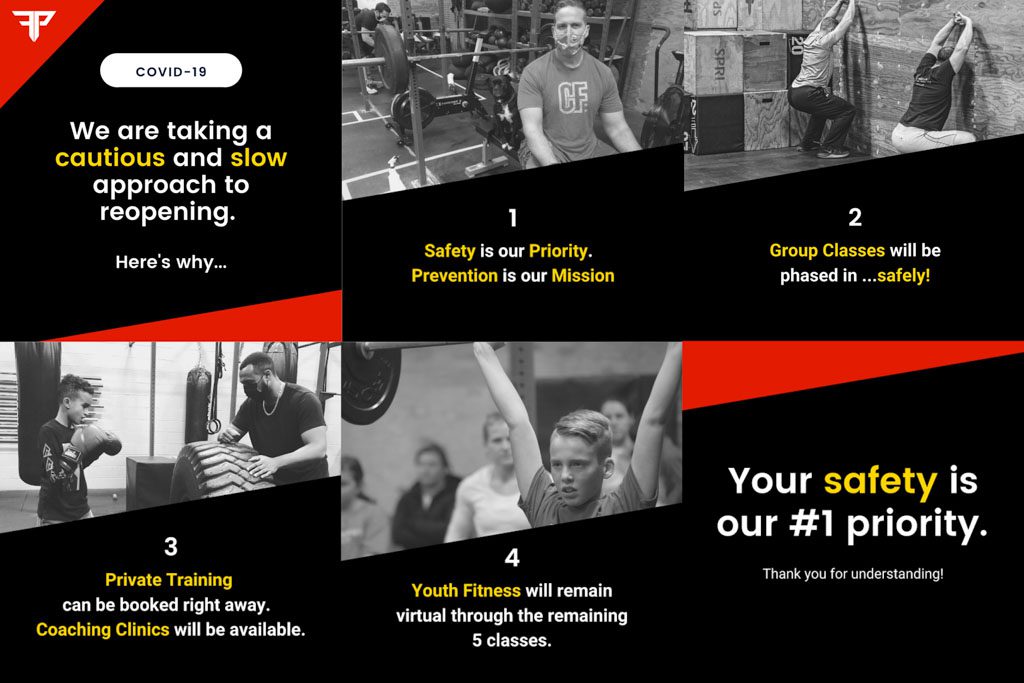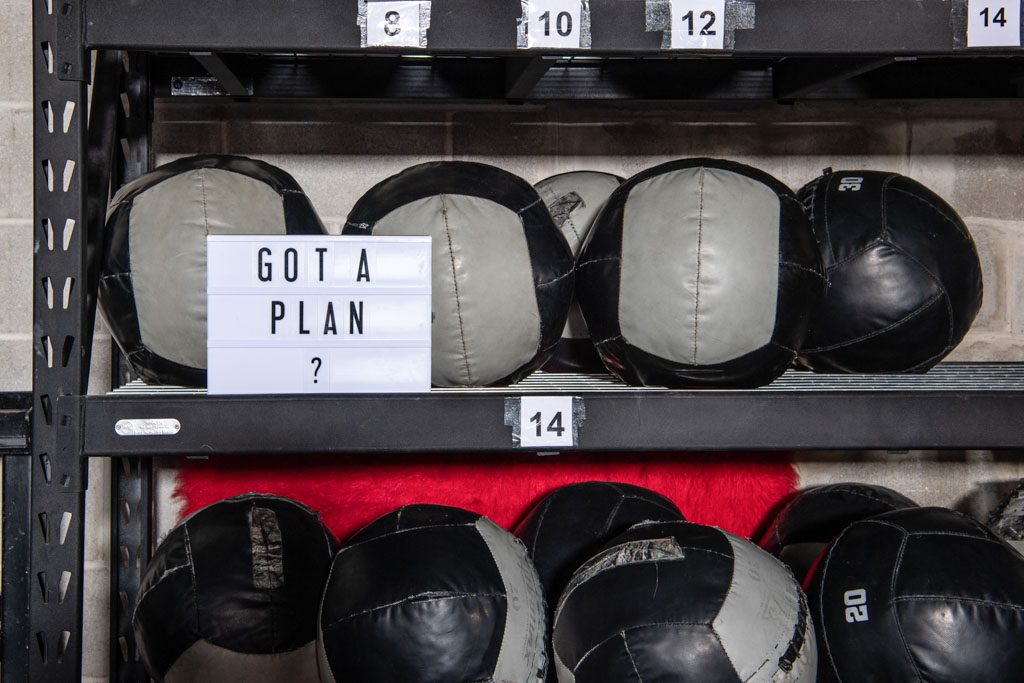By Andrea Savard and Chris Cooper, Certified Two-Brain Fitness Business Mentors
Closing your gym was tough.
For many, reopening is proving to be harder.
While online training was an easy pivot for many gym owners, the pivot back to bricks and mortar is taking longer. Government restrictions limit class sizes in many areas, some clients are nervous about exposure to COVID-19, and changing gears can be challenging for your team.
Below, we’ll walk through the stages of reopening step by step and tell you what to do, depending on what’s allowed in your area. These are proven strategies employed worldwide by gyms in the Two-Brain family.
You can also download our “How to Reopen Your Gym” guide here.
This Above All Else
The overarching key to success is communication—regardless of the specific restrictions in your area.
Reiterate that you’re open, you’re excited and you’re safe. Be authentic and talk in terms of your members’ interests. Your goal is to strengthen their trust in you.

Stage: Personal Training Only
This restriction is often an opportunity in disguise. While it’s frustrating that you can’t get your group members back into the gym, it’s a good chance to introduce the 1:1 option to your clients.
Try this:
“Family, great news! We can open the gym for 1:1 training only. While this isn’t the full reopening we were hoping for, we’re excited to see you in person while we work through this stage. This is a great opportunity to rebuild safely, refresh yourself on movements and increase your confidence again.
“You can book a personal training session here: (insert your own link).
If you haven’t tried a personal training session before, here’s why many clients choose to do a 1:1 session weekly or monthly: (share a quote from a very satisfied PT client).”
Stage: 25 Percent Capacity
For microgyms, this rule often means “run a medium-sized class.” Because your “capacity” is determined by your occupancy rate, most microgyms never run higher than 30 percent capacity anyway.
Use this opportunity to introduce pre-registration for classes. It’s a good move anyway, and you can blame the local government if you haven’t been requiring sign-ins before now.
Remember, pre-registration requires an active membership account, so this is a great way to get the income re-flowing if people have dropped or held memberships.
Make sure to create clear and simple how-to’s for members and coaches if this is a new process for you—create standard operating procedures!
Further, consider introducing small-group specialty programs. Specialty programs often have a higher cost per class. They’re also more targeted in their offerings and attractive to members who aren’t ready to return to 10-person classes. For example, create four-session program blocks with a maximum of five athletes per block. Run the classes once a week for four weeks or twice a week for two weeks to generate small group or remote coaching revenue.
Stage: Gyms Open, No Classes Allowed
This is an odd strategy, but most policymakers think “spin class” when they’re making these rules. So if your government has issued this restriction, offer “open gym” times with a coach in attendance.
It’s very important that you still coach your clients instead of just opening your gym. Coaching establishes value; if you’re just selling access, you’re no different from the globo gym charging $19 per month.
Make sure you tell your clients that “open gym” is temporary and they will still be coached. This path can become a slippery slope for many microgym owners: Use it only as a last resort. In the past, some brands have promoted the no-class, “come anytime and get coached!” model, and it ends with the owner coaching more often for less money. But as a short-term patch, this approach can help get people back to training in the gym.
Stage: Open, But …
Even if you’re eager to get back to business, your clients might be nervous. And your coaches might be nervous.
Make sure you communicate options to everyone, and regularly broadcast your beliefs and commitment to your community’s safety.
Keep your online delivery option for at least two months after reopening.

